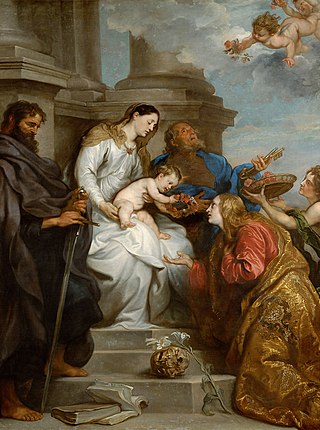
Rosalia, nicknamed la Santuzza, is the patron saint of Palermo in Italy, Camargo in Chihuahua, and three towns in Venezuela: El Hatillo, Zuata, and El Playón. She is especially important internationally as a saint invoked in times of plague. From 2020 onwards she has been invoked by some citizens of Palermo to protect the city from COVID-19.
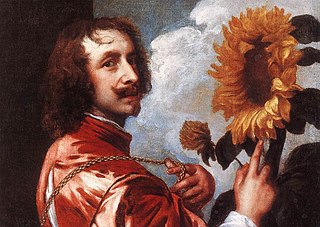
Sir Anthony van Dyck was a Flemish Baroque artist who became the leading court painter in England after success in the Spanish Netherlands and Italy.
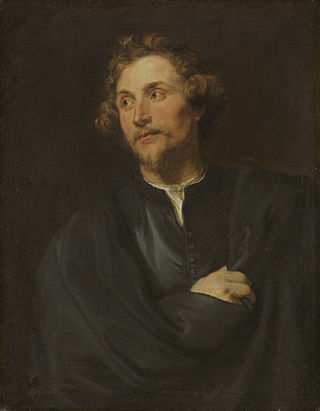
Georg Petel was a German sculptor and a virtuoso ivory carver. His work marks the beginning of Baroque sculpture in Germany.

Pieter Thijs, Peter Thijs or Pieter Thys was a Flemish painter of portraits as well as religious and history paintings. He was a very successful artist who worked for the courts in Brussels and The Hague as well as for many religious institutions. His work was close to the courtly and elegant style of Anthony van Dyck and his followers.

A Van Dyke is a style of facial hair named after the 17th-century Flemish painter Anthony van Dyck (1599–1641). The artist's name is today normally spelt as “van Dyck", though there are many variants, but when the term for the beard became popular "Van Dyke" was more common in English. A Van Dyke specifically consists of any growth of both a moustache and goatee with all hair on the cheeks shaved. Even this particular style, though, has many variants, including a curled moustache versus a non-curled one and a soul patch versus none. The style is sometimes called a "Charlie" after King Charles I of England, who was painted with this type of beard by van Dyck. "Pike-devant" or "pickedevant" are other little-known synonyms for a Van Dyke beard.

Isabella Brant was the first wife of the Flemish painter Peter Paul Rubens, who painted several portraits of her.

Ferdinand van Boisschot or Ferdinand de Boisschot, Baron of Zaventem, was a jurist and diplomat from the Low Countries who became chancellor of the Duchy of Brabant.
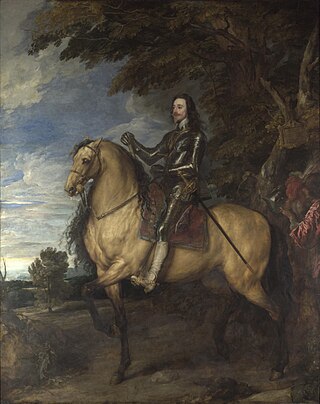
The Equestrian Portrait of Charles I is a large oil painting on canvas by Anthony van Dyck, showing Charles I on horseback. Charles I had become King of England, Scotland and Ireland in 1625 on the death of his father James I, and Van Dyck became Charles's Principal Painter in Ordinary in 1632.

Charles I with M. de St Antoine is an oil painting on canvas by the Flemish painter Anthony van Dyck, depicting Charles I on horseback, accompanied by his riding master, Pierre Antoine Bourdon, Seigneur de St Antoine.

The Portrait of Infanta Isabella Clara Eugenia is a painting by Rubens of Isabella Clara Eugenia. It is dated to 1625 and shows her in the habit of the Poor Clares, which she assumed on 22 October 1621 after the death of her husband Archduke Albert of Austria. She visited the painter's studio while on her way back from Breda in 1625 to see the painting begun, as a master copy from which several others could be drawn. The master copy is now in the Galleria Palatina in Florence, having been traded in the past for a portrait of the same subject by Anthony van Dyck. Two other copies are known in private collections, while a third is in the Norton Simon Museum in Pasadena.

Gerrit Cornelisz. Vlasman, was a Dutch Golden Age brewer and member of the Haarlem schutterij.

Madonna and Child is a 1621–1627 painting by Anthony van Dyck, now in the Galleria nazionale di Parma.

Saint Rosalie Interceding for the Plague-stricken of Palermo is a painting of 1624 by Anthony van Dyck, in the Metropolitan Museum of Art in New York since 1871.

Saint Rosalia Crowned by Angels is an oil on canvas painting by the studio of Anthony van Dyck, created c. 1624, one of several works showing the saint produced whilst van Dyck was quarantined in Palermo, Sicily due to a plague. It is now in the Galleria Regionale del Palazzo Abatellis in Palermo, where in 2015 it was displayed alongside Saint Rosalie Interceding, loaned from the Metropolitan Museum of Art.

Saint Rosalia Crowned by Angels is a c. 1625 oil on canvas painting by Anthony van Dyck, one of five surviving works showing the saint which he produced whilst he was quarantined in Palermo, Sicily due to a plague. It is now in the Menil Collection in Houston, Texas, which bought it in 1968. It was loaned from there in 2011-2012 to the Dulwich Picture Gallery in London.
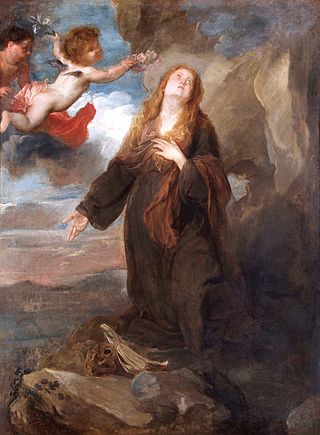
Saint Rosalia Crowned by Angels is a c. 1625 oil on canvas painting by Anthony van Dyck, one of five surviving works showing the saint which he produced whilst he was quarantined in Palermo, Sicily due to a plague. It is now in the Wellington Collection at Apsley House in London.

Saint Rosalia is a c.1625 oil on canvas painting by Anthony van Dyck. Originally owned by Giovan Francesco Serra di Cassano, it was bought by Philip IV of Spain via his Viceroy of Naples Gaspar de Bracamonte in 1664 and is now in the Museo del Prado in Madrid

Saint Rosalia Interceding for the City of Palermo is an oil on canvas painting of Saint Rosalia by Anthony van Dyck, now in the Museo de Arte de Ponce in Puerto Rico, which acquired it at auction at Sotheby's in London on 7 December 1960. It is sometimes dated to 1629 when the artist was back in Antwerp and sometimes to 1624-1625 whilst the artist was quarantined in Palermo, Sicily.

The Coronation of Saint Rosalia or Madonna and Child with Saints Rosalia, Peter and Paul is an oil on canvas painting made by Anthony van Dyck in 1629.
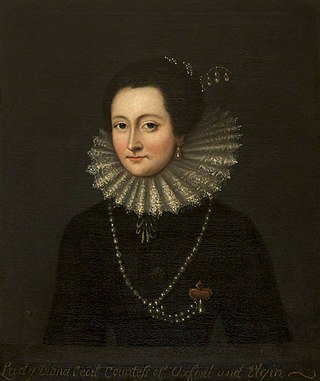
Diana Cecil, Countess of Oxford (1596-1654) was an English aristocrat.


















